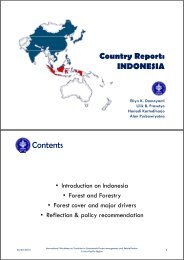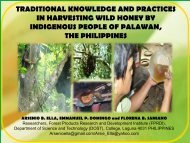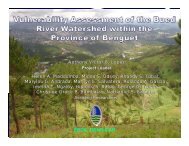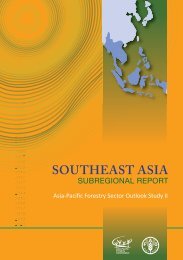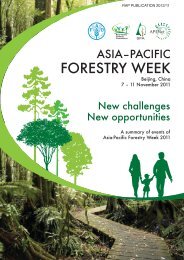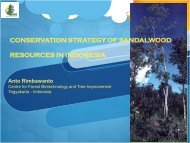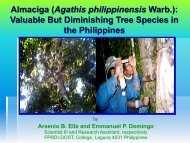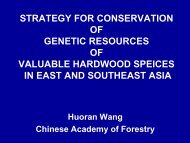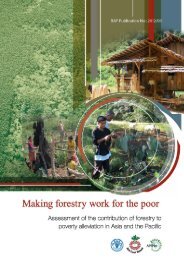Community guidelines for accessing forestry voluntary carbon ... - FAO
Community guidelines for accessing forestry voluntary carbon ... - FAO
Community guidelines for accessing forestry voluntary carbon ... - FAO
Create successful ePaper yourself
Turn your PDF publications into a flip-book with our unique Google optimized e-Paper software.
Background in<strong>for</strong>mation<br />
Be<strong>for</strong>e using these <strong>guidelines</strong>, it is essential to understand the<br />
connection between <strong>carbon</strong>, climate change and <strong>for</strong>estry. Forests have<br />
a significant role within climate change, and their crucial role in climate<br />
change mitigation and adaptation is internationally acknowledged. This<br />
connection is clearly described within the first chapter of the <strong>guidelines</strong>.<br />
Forests have a complex role in climate change. They are a potential<br />
source of Greenhouse Gases (GHGs), releasing <strong>carbon</strong> dioxide (CO 2<br />
)<br />
emissions when cleared. They also have great potential as sinks,<br />
removing CO 2<br />
from the atmosphere, converting it to <strong>carbon</strong>, which is<br />
stored as biomass. Forests as a source of emissions aggravate climate<br />
change, while <strong>for</strong>ests as a sink contribute to climate change mitigation.<br />
Forests are also sensitive to the effects of changes in temperature,<br />
precipitation and seasonal patterns, so their ecosystems are vulnerable<br />
to the adverse effects of climate change. However, through the products<br />
and environmental services they provide, <strong>for</strong>ests also help to make<br />
human populations less vulnerable to the damaging effects of climate<br />
change, and are there<strong>for</strong>e important in adaptation strategies, such as:<br />
• The sustainable use of timber and non-timber <strong>for</strong>est products<br />
<strong>for</strong> alternative livelihoods;<br />
• On-farm plantations <strong>for</strong> protection of watercourses and<br />
provision of shade and dry season fodder <strong>for</strong> livestock, and;<br />
• Maintenance of biodiversity corridors as shifting seasonal<br />
patterns cause wildlife habitats to change.<br />
So there are many sound reasons why <strong>for</strong>ests have become increasingly<br />
linked with ef<strong>for</strong>ts to address climate change over recent years. The<br />
growth of the <strong>for</strong>estry Voluntary Carbon Market (VCM) is part of this<br />
trend. Forestry VCM projects are valued because of their role in climate<br />
1




